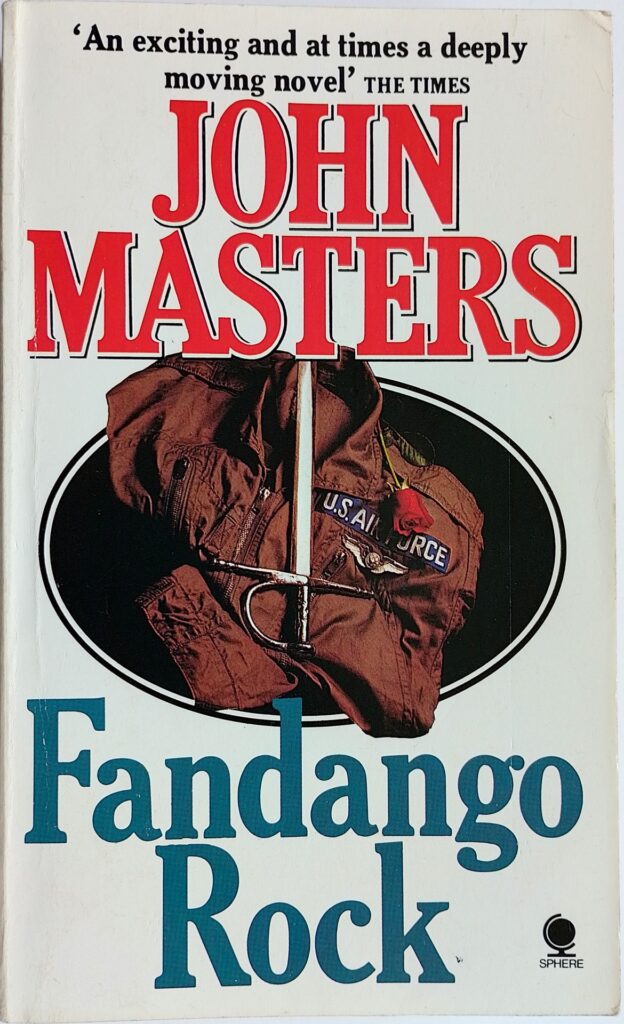First published 1959. Sphere, paperback, 1984, pp 330, c.135,000 words.
This is a clash-of-cultures book, which is Masters usual territory, but this is a clash between Americans and Spaniards in the 1950s and not the British and Indians during the colonial period. Masters again conveys a love and admiration for both sides, but this does not ring so true here as it does in his India books. Masters was born in India and after education in England, returned there to serve in the army. That deep immersion gives his books set there great colour and depth; this lacks that intimate knowledge. The book conveys an earnest striving to explain; there are long passages where each side of the divide describe all the follies and faults of the other, and other sections where he expresses admiration for the finer aspects of each.
The story is set in Spain. A large American nuclear bomber base has been built close to a medium size town somewhere close to the Pyrenees (Pamplona might be the model.) The gap between the wealth of Americans and Europeans was perhaps at its widest at this time, particularly in Spain, which was held back by the Franco dictatorship. Naturally, there is substantial resentment amongst some of the Spanish men that some of the local women are attracted to the American servicemen. There is also a group of Spaniards who wish to preserve the old (essentially medieval) Spain, when Spanish power was at its height. These elements are well conveyed.
The story resolves around a young American woman, the recently graduated daughter of a senior officer at the base. She is attracted by Spanish culture, believing that most of the Americans there do not recognise its virtues. She becomes interested in a matador whom she first sees at a bullfight. She becomes friendly with the matador’s family and gets a chance to go to live with them for a while. Her boyfriend is an American captain, a classic, clean-cut type who dislikes the ‘backwardness’ of Spanish culture. The Matador is resentful of the Americans and how they are influencing Spain.
Masters must have known Spain well. There are some excellent descriptions of landscapes and city scenes, both rich and the poor. One feels he must have visited some dodgy dives to obtain local colour. There are extensive descriptions of bullfights with a lot of what, presumably, are technical terms. He must have visited such events and leaned how to judge the matador’s skill. He presents both sides: the American’s disgust at the ‘barbaric’ spectacle, the ‘unfair fight’ and the blood lust, and the deep cultural resonance that the events have for the locals with their intimate knowledge of what is going on, its history and place in their culture. I found these scenes hard to read, coming at them with approximately the American’s viewpoint.
Masters uses his story to bring out aspects of Spanish culture and these can get in the way of realism. The American women decides that she has to walk through the poor area of the city alone at night as a form of penance, entirely unjustifiably. At one point she is the carnival queen and maintains her dignity in the face of humiliation. In the latter stages any attempt at realism goes out the window and the plot veers into unrealistic turns. Masters is usually good at the story element, but his attempts to explain Spain have got the better of his plotting here. I never believed in the Spanish heroic character who is intended to project himself as a man of honour and yet seems as devious and self-serving as anybody.
Masters writes fluidly in his usual easily digested style. His descriptions of a young woman in love and making love are well drawn. His Americans generally ring true (he had been living in America for some ten years at the time this was published.) Sometimes he reaches a little too far for a metaphor: ‘a line of snow peaks made a thin white fire…’ [p104 and again on p295]
This is one strictly for Masters completists. Far better to start with one of his India books; Bhowani Junction, for example.
© William John Graham, December 2022

